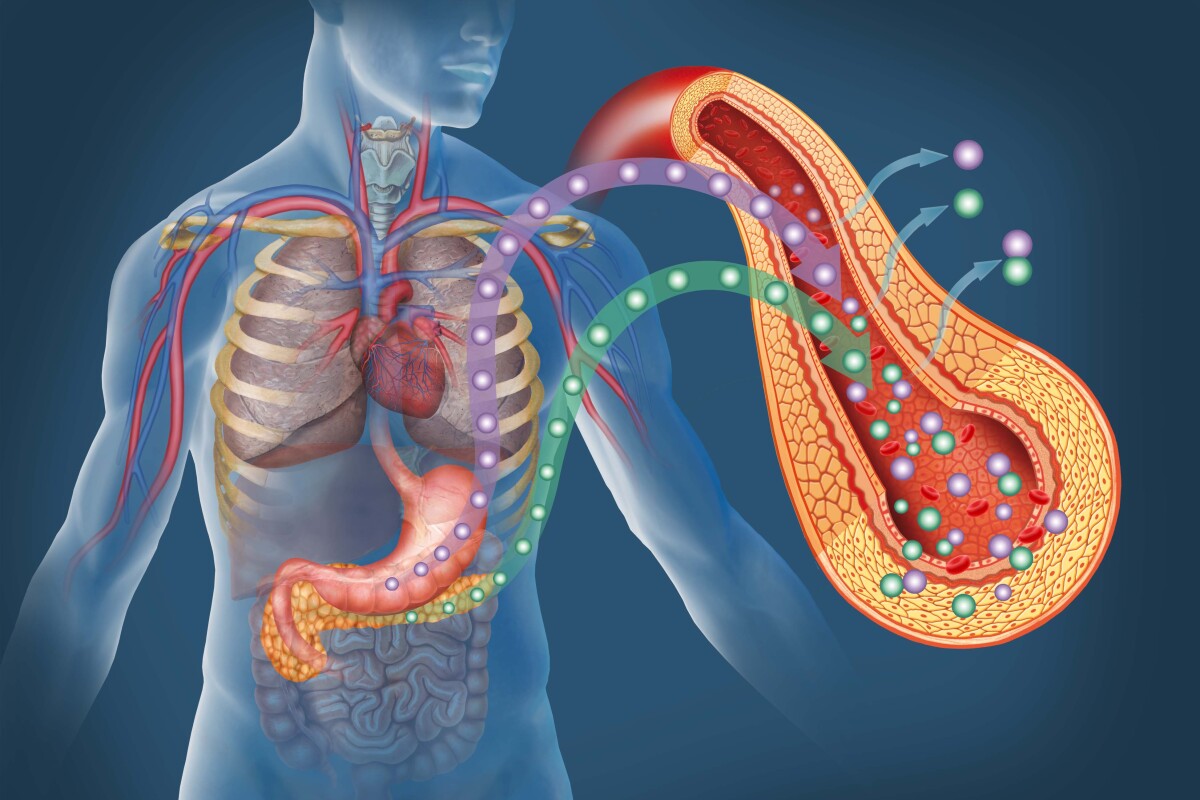
This is hugely promising. Three minutes of application and you are good to go for the day.
This will end the extended cellular damage induced by imbalances. So yes this is a huge breakthrough. It may well apply to a much larger cross section of the population as about eighty percent are susceptable to the condition.
It may also make it painless to remain trim as well.
Diabetes successfully treated using ultrasound in preclinical study
By Rich Haridy
April 05, 2022
https://newatlas.com/medical/focused-ultrasound-prevents-reverses-diabetes-ge-yale/?
Animals studies have demonstrated just three minutes of focused ultrasound a day can keep blood glucose levels normal, and early human trials are now underway
Promising new research has raised the possibility of treating type 2 diabetes without drugs. Across three different animal models researchers have demonstrated how short bursts of ultrasound targeted at specific clusters of nerves in the liver can effectively lower insulin and glucose levels.
Reporting in the journal Nature Biomedical Engineering, a team led by GE Research, including investigators from the Yale School of Medicine, UCLA, and the Feinstein Institutes for Medical Research, demonstrated a unique non-invasive ultrasound method designed to stimulate specific sensory nerves in the liver. The technology is called peripheral focused ultrasound stimulation (pFUS) and it allows highly targeted ultrasound pulses to be directed at specific tissue containing nerve endings.
“We used this technique to explore stimulation of an area of the liver called the porta hepatis,” the researchers explained in a Nature briefing. “This region contains the hepatoportal nerve plexus, which communicates information on glucose and nutrient status to the brain but has been difficult to study as its nerve structures are too small to separately stimulate with implanted electrodes.”
The newly published study indicates short targeted bursts of pFUS at this area of the liver successfully reversed the onset of hyperglycaemia. The treatment was found to be effective in three separate animal models of diabetes: mice, rats and pigs.
“Unfortunately, there are currently only very few drugs that lower insulin levels,” explained Raimund Herzog, a Yale School of Medicine endocrinologist working on the project. “If our ongoing clinical trials confirm the promise of the preclinical studies reported in this paper, and ultrasound can be used to lower both insulin and glucose levels, ultrasound neuromodulation would represent an exciting and entirely new addition to the current treatment options for our patients.”
The study found just three minutes of focused ultrasound each day was enough to maintain normal blood glucose levels in the diabetic animals. Studies in humans are currently underway to work out whether this method translates from animal studies. But there are other hurdles facing broad clinical deployment of the technique beyond simply proving it works.
Current ultrasound tools used to perform this kind of pFUS technique require trained technicians. The researchers suggest the technology exists to simplify and automate these systems in a way that could be used by patients at home, but it will need to be developed before this treatment can be widely deployed.
“… wearable ultrasound probes have minimized the need for manual handling of the probe during use, and automated anatomical target detection software is now available to enable target tracking in real time using convolution neural-network models,” the researchers write in the new paper. “These advances may enable the development of novel wearable ultrasound systems that can be applied by unskilled users, and further enable use across clinical applications and settings.”
Of course, it is important to note this study was funded and led by investigators at GE Research, an innovation arm of global powerhouse company General Electric. So if anyone has the resources to develop some kind of small, targeted ultrasound device to use at home as a diabetic treatment it is this company.
Christopher Puleo, corresponding author on the new study and senior biomedical engineer at GE Research, says these kinds of novel non-pharmaceutical methods could replace a number of drug treatments in the future.
“We’re now in the midst of human feasibility trials with a group of type-2 diabetic subjects, which begins our work toward clinical translation,” Puleo said. “The use of ultrasound could be a game-changer in how bioelectronic medicines are used and applied to disease, such as Type- 2 diabetes, in the future.”
Other researchers are a bit more cautious in their interpretation of these new findings. A comment on the research from the editors of the journal Nature Biomedical Engineering does admit this innovation could ultimately lead to a new kind of diabetes treatment, but lots more work is needed before we get there.
“That pulses of focused ultrasound applied to the hepatoportal neural plexus can restore glucose homeostasis, as the authors show in various animal models, underscores the therapeutic relevance of brain-liver nerve pathways, and could eventually constitute an alternative non-invasive treatment for type-2 diabetes and other metabolic conditions,” the editors write in a statement accompanying the new publication. “The approach warrants further testing in larger animals.”
Richard Benninger, a diabetes researcher from the University of Colorado Anschutz Medical Campus, called the new work an extremely thorough demonstration of how ultrasound could be used to ameliorate diabetes.
“The authors provide a detailed characterization for how the reversal of hyperglycaemia occurs in multiple peripheral and central tissues, across multiple animal models,” said Benninger, who did not work on the new research. “This approach represents a new paradigm for diabetes treatment and the deployability of ultrasound means it is readily translatable.”
Of course, a positive early animal study can still mean we are years away from real-world clinical application. The GE Research team said further preclinical studies have been conducted exploring different ultrasound doses and durations. Initial human studies have also begun, with preliminary results expected later this year.
The new study was published in the journal Nature Biomedical Engineering.
No comments:
Post a Comment